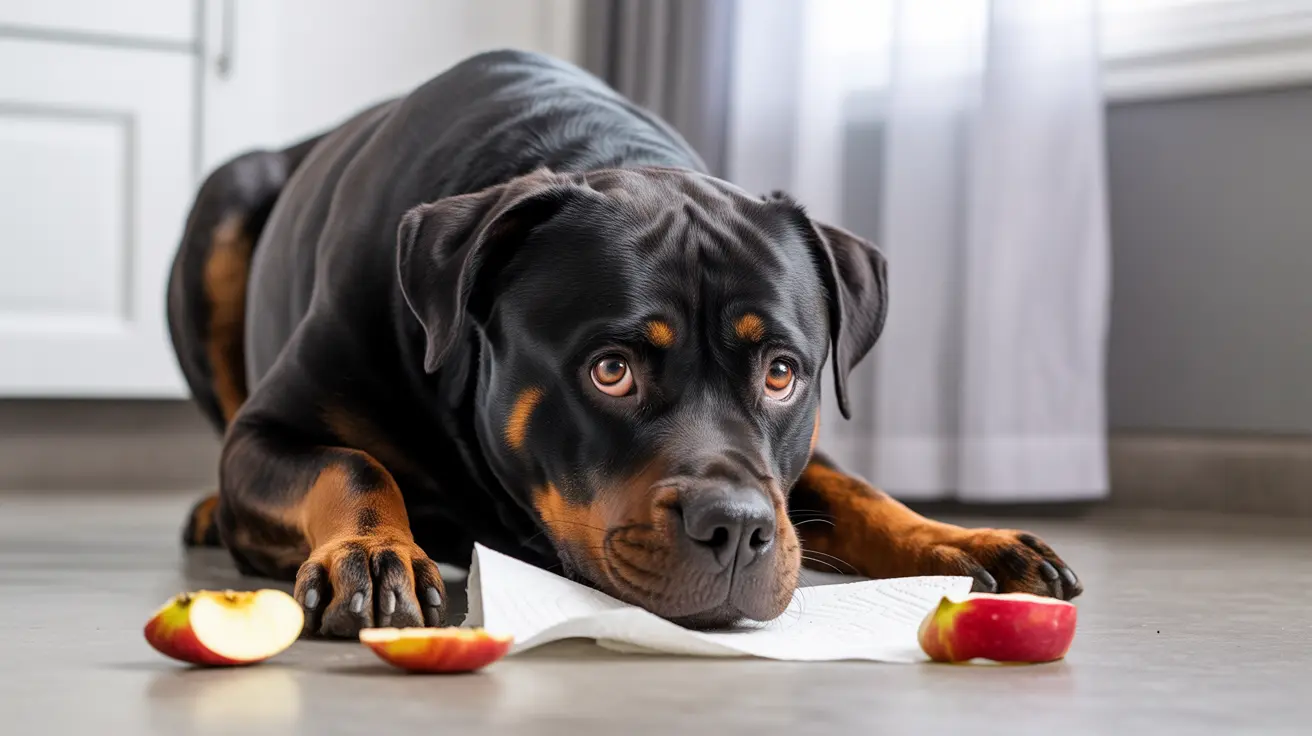Finding out your dog has eaten a paper towel can be a concerning situation for any pet owner. While some dogs may pass small amounts of paper towel without issue, this common household item can potentially cause serious complications, from mild digestive upset to life-threatening blockages.
In this comprehensive guide, we'll explore what you need to know if your dog has consumed paper towels, including immediate steps to take, warning signs to watch for, and when to seek emergency veterinary care.
Understanding Why Dogs Eat Paper Towels
Dogs may consume paper towels for various reasons, ranging from simple curiosity to underlying medical conditions. Common motivations include:
- Boredom or stress-related behavior
- Attraction to food residue or scents on used paper towels
- Puppy exploration behavior
- Medical conditions like pica
- Nutritional deficiencies
Immediate Steps After Paper Towel Ingestion
If you've caught your dog in the act or discovered they've eaten paper towels, take these important steps:
- Assess the quantity consumed
- Check if the paper towel was contaminated with chemicals or harmful substances
- Note the time of ingestion
- Contact your veterinarian for guidance
- Monitor your dog closely for symptoms
Potential Risks and Complications
Physical Obstruction Risks
The most serious concern when a dog eats paper towels is the potential for intestinal blockage. Paper towels can:
- Expand when wet, increasing blockage risk
- Bunch up in the digestive tract
- Cause partial or complete intestinal obstruction
- Lead to tissue damage or death if left untreated
Chemical Exposure Risks
Used paper towels may contain harmful substances such as:
- Cleaning products
- Toxic chemicals
- Grease or oils
- Harmful food residue
Warning Signs to Watch For
Monitor your dog for these symptoms of potential complications:
- Vomiting or repeated attempts to vomit
- Loss of appetite
- Lethargy or depression
- Abdominal pain or bloating
- Difficulty defecating
- Drooling excessively
- Refusing to lie down
Treatment Options and Recovery
Treatment approaches vary based on the severity of the situation:
Conservative Management
- Monitoring and waiting for natural passage
- Dietary modifications
- Fluid therapy if needed
Medical Intervention
- X-rays or ultrasound to locate the paper towel
- Endoscopic removal if possible
- Surgery if obstruction occurs
Prevention Strategies
To prevent future incidents:
- Keep paper products out of reach
- Use covered trash cans
- Address underlying behavioral issues
- Provide appropriate chew toys
- Consider training or behavioral modification
Frequently Asked Questions
What should I do immediately if my dog ate a paper towel?
Assess the amount eaten and whether it was contaminated. Contact your veterinarian for guidance, and monitor your dog closely for signs of distress or blockage. Don't induce vomiting unless specifically instructed by your vet.
How can I tell if my dog has an intestinal blockage from swallowing paper towels?
Watch for symptoms such as repeated vomiting, lethargy, loss of appetite, abdominal pain, and difficulty defecating. If you notice these signs, seek immediate veterinary care.
Can paper towels cause serious health problems or require surgery in dogs?
Yes, paper towels can cause serious complications, including intestinal blockages that may require emergency surgery. The severity depends on factors like the amount ingested, the dog's size, and how quickly treatment is sought.
Why do some dogs eat paper towels and how can I prevent this behavior?
Dogs may eat paper towels due to boredom, anxiety, or underlying medical conditions like pica. Prevention involves keeping paper products out of reach, providing appropriate toys, and addressing any underlying behavioral or medical issues.
How long does it usually take for a dog to pass a small piece of paper towel safely?
If a small piece of paper towel will pass safely, it typically takes 24-72 hours. However, monitor your dog closely during this time for any signs of distress or blockage.
While paper towel ingestion can be scary for pet owners, understanding the risks and knowing when to seek help can make all the difference in ensuring a positive outcome. Always err on the side of caution and consult your veterinarian if you're concerned about your dog's safety.






